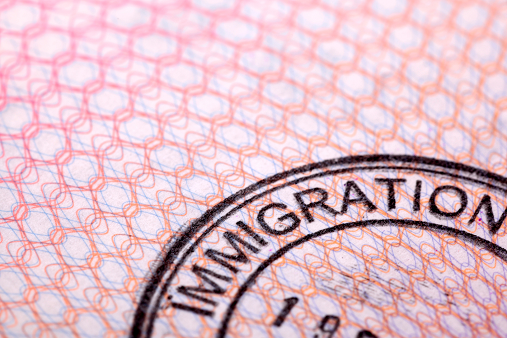In the latest chapter of the longstanding Akamai v. Limelight dispute addressing the issue of joint patent infringement, a divided Federal Circuit panel rejected extending liability for direct infringement to joint actors combining to practice the steps of an asserted patent claim. The Federal Circuit’s 2-1 panel decision maintains the status quo, in which direct-infringement liability under 35 U.S.C. § 271(a) requires that “all of the steps of the claim are performed by or attributed to a single entity[.]” Akamai Tech., Inc. v. Limelight Networks, Inc., No. 2009-1372, slip op. (Fed. Cir., May 13, 2015), p. 6. The “single-entity rule” precludes liability for direct infringement where multiple parties combine to practice the steps of a patent claim outside of an agency or contractual relationship allowing attribution of infringement to a single entity.
The latest Akamai ruling addressed the question the Supreme Court’s June 2014 Akamai v. Limelight decision left open for the Federal Circuit: whether to expand liability for direct infringement to include joint actors combining to practice the steps of a patented invention, Limelight Networks, Inc. v. Akamai Tech., Inc., 134 S.Ct. 2111 (2014). The Supreme Court unanimously overruled the Federal Circuit’s 2012 en banc ruling, which had declined to address the direct-infringement question, opting instead to recognize a theory of indirect infringement for joint actors under 35 U.S.C. § 271(b). Finding that the Federal Circuit had created inconsistent definitions of infringement for direct and indirect infringement, the high court held that a finding of indirect infringement liability required that a single entity practice all limitations of an asserted patent claim, Id. at 2117-18. The possibility the Federal Circuit had “erred by too narrowly circumscribing the scope of § 271(a) [was] no reason for this Court to err a second time by misconstruing § 271(b) to impose liability for inducing infringement where no infringement has occurred,” Id. at 2119. The Supreme Court declined, however, to directly address whether to overturn the single-entity rule and create an infringement definition recognizing joint liability. Instead, the high court invited the Federal Circuit to reconsider the joint-infringement issue on remand “if it so chooses,” Id. at 2120.
On remand, the Federal Circuit declined to address the Supreme Court’s guidance en banc, referring the case for panel consideration. The panel declined to recognize a theory of joint direct infringement. Writing for the 2-1 majority, Judge Richard Linn concluded that “the statutory framework of 35 U.S.C. § 271 does not admit to the sweeping notions of common-law tort liability argued in this case[.]” Akamai Tech., Inc. v. Limelight Networks, Inc., No. 2009-1372, slip op. (Fed. Cir., May 13, 2015), p. 5. In dissent, Judge Kimberly Moore argued that “[t]he majority’s rule creates a gaping hole in what for centuries has been recognized as an actionable form of infringement,” Id. at dissent, p. 1. Judge Moore criticized a “single entity rule” born of “scant analysis” and representing “judicial fiction which upsets the settled expectations of the inventing and business community,” Id. at pp. 6, 33.
The Akamai case has been on the forefront of “joint infringement” patent jurisprudence for the better part of a decade, portending the possibility of major change in infringement law, and having wide-ranging implications in patent litigation, patent prosecution, and transactional law as pertaining to joint technology actors. The Federal Circuit’s latest decision is the most recent installment in Akamai’s 2006 infringement lawsuit alleging that Limelight infringed Akamai’s U.S. Patent No. 6,108,703 covering a multi-step method of using a “content delivery network” to store electronic data (e.g., website components) for efficient delivery across the Internet. Akamai received a $45 million infringement verdict in the District of Massachusetts, which was overturned by the district court, setting up the string of appeals decisions leading to the Supreme Court’s 2014 decision and the Federal Circuit’s latest decision on remand. The saga will apparently continue. Akamai has announced its intention to seek the Federal Circuit’s en banc review of the latest panel opinion and, if necessary, to take the joint-infringement issue before the Supreme Court.
For more information, contact the Barnes & Thornburg attorney with whom you work or a member of the firm’s Intellectual Property Law Department in the following offices: Atlanta (404-846-1693), Chicago (312-357-1313), Columbus (614-628-0096), Delaware (302-300-3434) Elkhart (574-293-0681), Fort Wayne (260-423-9440), Grand Rapids (616-742-3930), Indianapolis (317-236-1313), Los Angeles (310-284-3880), Minneapolis (612-333-2111), South Bend (574-233-1171), Washington, D.C. (202-289-1313).
© 2015 Barnes & Thornburg LLP. All Rights Reserved. This page, and all information on it, is proprietary and the property of Barnes & Thornburg LLP. It may not be reproduced, in any form, without the express written consent of Barnes & Thornburg LLP.
This Barnes & Thornburg LLP publication should not be construed as legal advice or legal opinion on any specific facts or circumstances. The contents are intended for general informational purposes only, and you are urged to consult your own lawyer on any specific legal questions you may have concerning your situation.
Visit us online at www.btlaw.com and follow us on Twitter @BTLawNews.











/Passle/6488d4630e7e25c9ac9f834a/SearchServiceImages/2024-12-20-17-37-23-553-6765ab535670374036940848.jpg)
